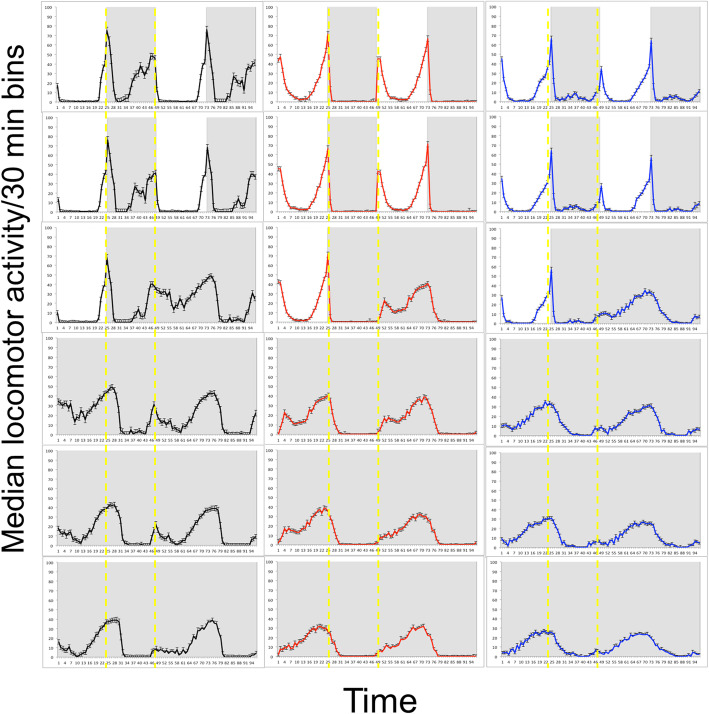Fig. 4.
Light masking of locomotor behaviour. Double plots of median locomotor activity (± SEM) per 30 min bin during 3 days in a 12:12 LD cycle followed by 4 days in DD. (N*, black, n = 71; D*, red, n = 130; C*, Blue, n = 110). Shades indicate light-off. Yellow dashed lines delineate subjective nights. The overall ANOVA between 4 days in LD and 4 days in DD conditions (starting from the second day in DD) indicates a significant effect of the light regime (i.e., LD vs. DD; F1,594 = 105.03, p < 0.0001) and genotype (F2,594:173.01, p < 0.0001). The interaction genotype × environment was also significant (F2,594:102.66, p < 0.0001). Post-hoc analysis (TukeyHSD text) revealed that both N* and C* flies became significantly more “diurnal” when released into constant conditions (N* p < 0.0001; C* p < 0.001). The ND ratios of D* flies did not significantly change in DD conditions (p = 0.94, NS)

